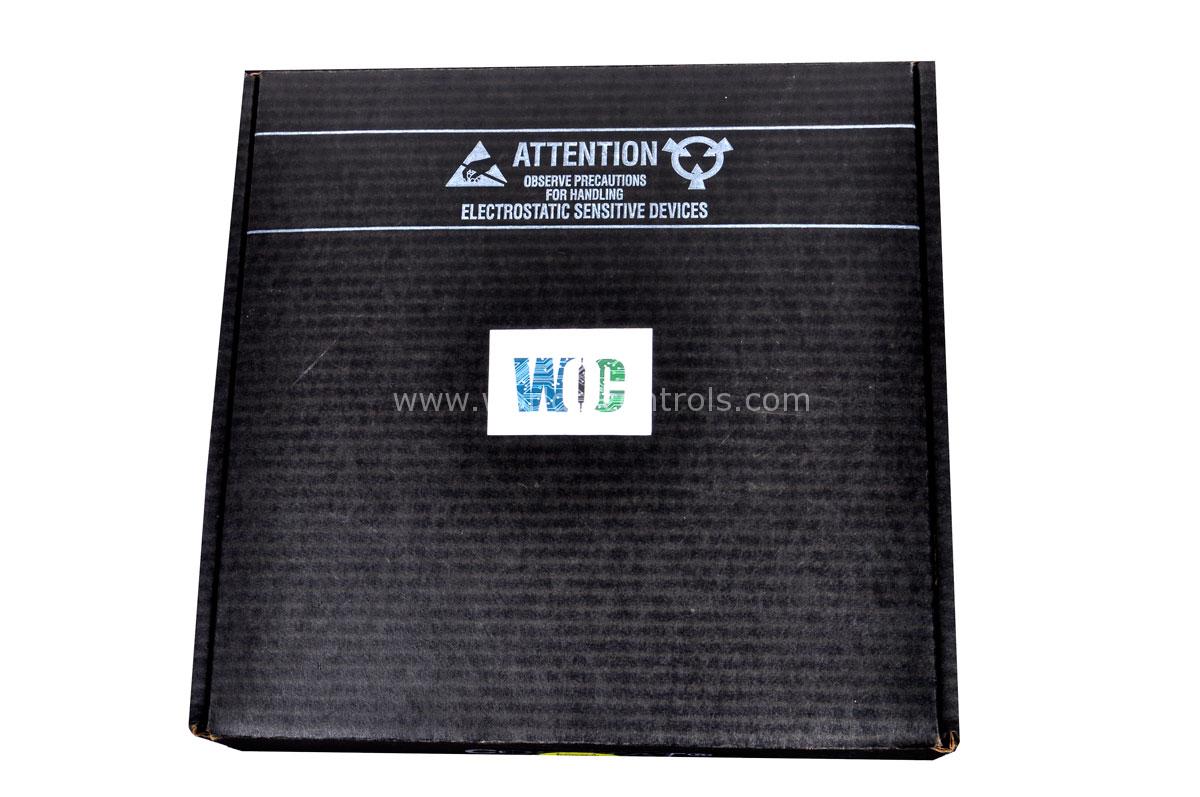
World Of Controls understands the criticality of your requirement and works towards reducing the lead time as much as possible.
5461-771 - Speed Reference Module is available in stock which ships the same day.
5461-771 - Speed Reference Module comes in UNUSED as well as REBUILT condition.
To avail our best deals for 5461-771 - Speed Reference Module, contact us and we will get back to you within 24 hours.
SPECIFICATIONS:
Part Number: 5461-771
Manufacturer: Woodward
Product type: Speed Reference Module
Device Type: Single Flush
Poles and Wires: 2 Pole, 3 Wire
Input Signal Type: 4–20 mA, 0–10 V, or pulse frequency
Auto Ground Clip: High Performance Brass
Accuracy: ±0.1%
Dielectric Voltage Withstands: 2000V per UL498
Maximum Working Voltage: 250V AC
Device Grade: Industrial
Voltage: 250V
Amperage: 20A
Operating Temperature: 0°C to 60°C
Size: 3.5 x 0.8 x 2.5 in
Availability: In Stock
Weight: 0.73 kgs
Country of Origin: United States (USA)
FUNCTIONAL DESCRIPTION:
5461-771 is a Speed Reference Module manufactured and designed by Woodward as part of the 5000 Series used in Turbine Control Systems. It functions by receiving an input signal—typically a command or setpoint that indicates the desired speed of the machine—and converting it into a standardized reference output that can be interpreted by the control system's governor or speed controller. This module is pivotal in maintaining accurate speed control, system stability, and safe operation, especially in dynamic environments such as power plants, petrochemical facilities, and manufacturing systems.
The speed reference signal generated by this module serves as the foundation for real-time speed regulation. It ensures that the system operates at the correct RPM (revolutions per minute) based on load demands or programmed sequences. Modern speed reference modules are designed with high accuracy, fast response times, and fault detection capabilities, enabling seamless integration into distributed control systems (DCS), programmable logic controllers (PLCs), and standalone turbine control platforms. They are compatible with both analog and digital input/output formats, allowing for flexible configuration across a wide range of industrial applications.
INSTALLATION:
Input terminals are connected to the source of the speed command signal, such as a PLC analog output, a manual speed setting device, or a supervisory control system. Output terminals are then linked to the speed governor or digital controller responsible for implementing the speed regulation logic. Power supply connections (typically 24 VDC or 110/230 VAC) should be made through an isolated and protected circuit to ensure the module receives clean and uninterrupted power. Once all connections are verified, the module can be powered on for initial testing and configuration.
During setup, software tools or onboard DIP switches (depending on the module design) may be used to configure parameters such as signal ranges, scaling factors, filtering options, and alarm thresholds. Some advanced models may also feature diagnostic LEDs or display screens to assist with troubleshooting and real-time monitoring. It is also advisable to conduct signal loop checks and verify output responses before commissioning the module for full operation.
OPERATION:
These signals may vary based on process conditions, system demands, or operator settings. The module processes these inputs, applies necessary scaling and filtering, and outputs a stable and accurate reference signal to the speed controller. The controller then uses this signal to adjust the output of actuators (e.g., valves, drives, or governors) that control the prime mover's actual speed.
Throughout its operation, the Speed Reference Module ensures high-resolution, real-time signal conversion with minimal latency, which is essential for maintaining system responsiveness and efficiency. In systems where safety and reliability are paramount, the module also monitors input signal integrity and internal status. If a fault or abnormal condition is detected—such as a loss of input signal, overvoltage, or internal failure—the module can activate alarms, switch to a backup reference, or trigger a safe shutdown depending on how it is programmed.
WOC has the most extensive stock of Woodward Control system replacement parts. We can also repair your faulty boards and supply unused and rebuilt boards backed up with a warranty. Our team of experts is available around the clock to support your OEM needs. Our team of experts at WOC is happy to assist you with any of your automation requirements. For pricing and availability on any parts and repairs, kindly contact our team by phone or email.
What is a Speed Reference Module?
A Speed Reference Module is an electronic interface device used in turbine, generator, and motor control systems. It receives speed command signals from a controller or operator and converts them into precise reference outputs. These reference signals are then used by the main control system, such as a speed governor or digital controller, to regulate the rotational speed of a machine accurately and reliably.
What types of input signals can the module accept?
These modules are designed to be versatile and accept a wide range of input signals, including analog inputs such as 4–20 mA or 0–10 V, frequency or pulse width modulation (PWM) signals, and digital protocols like Modbus or CAN. This flexibility allows them to integrate easily with PLCs, SCADA systems, operator panels, or remote setpoint controllers.
What does the output of a Speed Reference Module control?
The output of a Speed Reference Module provides a clean, scaled speed reference signal—typically in the form of 0–5 V, ±10 V, or 4–20 mA—that is used by speed controllers, governors, or variable frequency drives (VFDs). This output ensures that the actual speed of the rotating equipment matches the desired setpoint under all operating conditions.